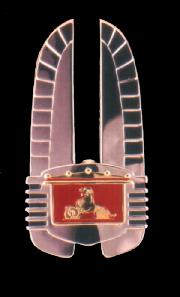



The Holden Story
One of the big reasons for the popularity of the
EH was its performance . . . a big jump from the EJ which used
basically the same 138 Cu. in. engine as the FB
For the first time GMH offered two new engines.
The engines were oversquare design, low piston
speed 149 and 179 Cu. in. sixes. The 149 produced 100 bhp (33 per
cent more than the EJ 138) and 115 bhp for the 179(53 per cent).
The 179 was available as an option on all automatic models.
The new engines were designed to be smoother,
longer lasting and give greater petrol economy. The shorter
stroke, larger bore engines helped make servicing easier with a
better design.
New features of the engines included seven
bearing crankshaft and hydraulic valve lifters for quieter
operation. The oil pump was placed outside the cylinder block.
Oil changes were needed after the first 4000 miles and then at
only 6000 mile intervals. Camshaft contours were designed for
better economy and performance at low and medium speeds. The
cylinder block consisted of seven bulkheads and seven main
bearings for greater strength with minimum weight. The new
engines were supported by two rubber mounts. The cylinder head
was secured to the block with fourteen bolts to stop possible
distortion and give effective gasket sealing. Spark plugs had
protective boots on the outside. Aluminium housings were used on
the water pump, distributor and timing gear.
The EH was a much squarer, cleaner design. The
car had a clean roofline and a longer look at the back. This
enlarged the boot to 22 cu. ft. The tail light cluster was now
square. The rear window was curved.
Stainless steel body side mouldings were used.
The front had a bolder new radiator grille and an open ventilator
grille. Windscreen wipers now had a bigger swept area.
The upholstery, trim and instrument cluster was
now very modern. The ignition switch had an accessory position
for the first time.
A special EH called the S4 was built in limited
numbers to compete in the 1963 Bathurst race. The S4 EH had
hardened gears, sintered iron brake linings and a 179 engine with
manual transmission.
| Technical Specifications |
| MODEL: 1963 EH sedan, 266,959 built from 1963-1965. |
| DIMENSIONS: Overall length 177.6 in., width 68 in., height 68.2 in., wheelbase 105 in., track 54.5 front and rear, weight 2540 lbs approx.. |
| ENGINE: 149 and 179 Cu. in. OHV sixes. 149 low compression. |
| POWER OUTPUT: 149, 100 bhp at 4400 rpm, 179, 115 bhp at 4000, 149 low compression, 95 bhp at 4400 rpm. |
| TORQUE: 145 lb. ft. at 2000 rpm (149), 175 ft. lb. at 1600 rpm (179), 135 ft. lbs at 2000 rpm (149 LC). |
| COMPRESSION RATIO: 8.8:1 for 149 and 179, 7.7:1 for 149 LC. |
| TRANSMISSION: Three speed manual with synchromesh on second and third. Column mounted shift lever. Optional three-speed automatic with column mounted shift lever. |
| SUSPENSION: Front: independent coils. control arms, stabiliser bar, shock absorbers. Rear: semi-elliptical loaf springs. shock absorbers. |
| BRAKES: Four wheel hydraulic, drums. |
| PETROL TANK: 9 1/2 gallons. |
| WHEEL SIZE: 13 x 4.50. |